
Don’t Forget Safety Gear
Safety isn’t a throwaway word when it comes to felling trees and running chain saws. You must take it seriously. There are a few absolutely essential safety gear items you need to wear for any chain saw work:
Buy safety gear and wear it. Special chaps will often stop a moving chain and save your thigh. A helmet with a face screen and ear protection is a convenient way to keep head, eye and ear protection handy in one comfortable package. Wear steel-toed, cut-resistant boots and a long-sleeved shirt to protect against the inevitable scratches. You’ll find this gear at chain saw dealers. Plus: Check out other safety gear every DIYer should own.

Don’t Use a Chain Saw That Should Be Retired
Cutting down a tree is no small task, and it requires a powerful tool. To keep you and your helpers safe during this project, be sure that your chain saw is in tip-top condition. But if your saw is past the point of repair, it’s worth buying a new one.
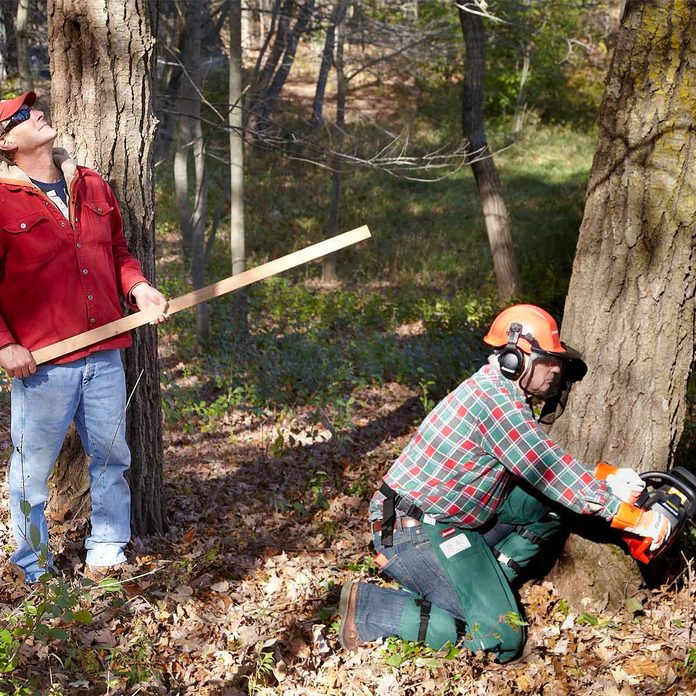
Don’t Work Alone
You’ll be a lot safer if you have a trusted assistant standing a few feet behind you watching the top of the tree for falling branches and letting you know when the tree starts to fall. Have your assistant tap you on the shoulder with a stick to alert you when it’s time to vacate the area.

Don’t Just Wing It
Do your research on how to cut down a tree safely. And before you even start your saw, stand back and size up the situation. Think about how you’ll cut each branch and what will happen when you do.
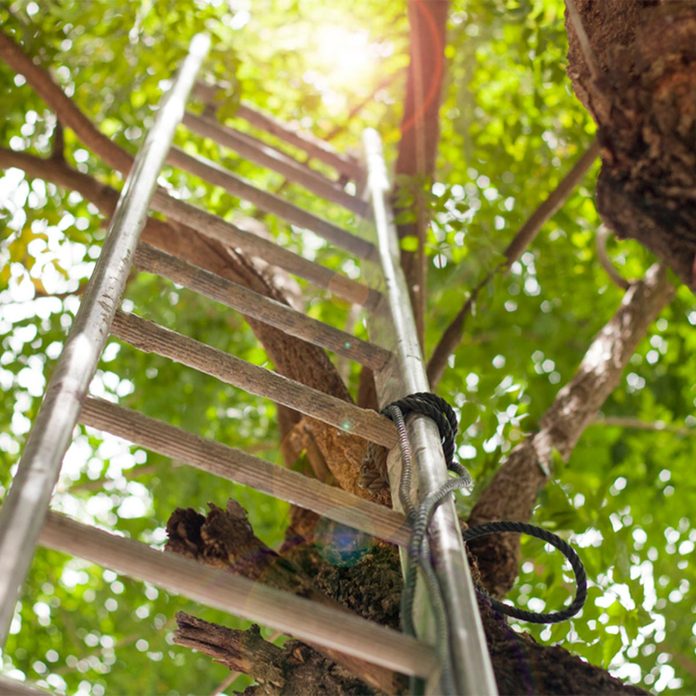
Don’t Lean You Ladder Against a Tree
It might be tempting to lean a ladder against a tree to do some pruning. Don’t do it. This stunt accounts for a large percentage of chain saw injuries.
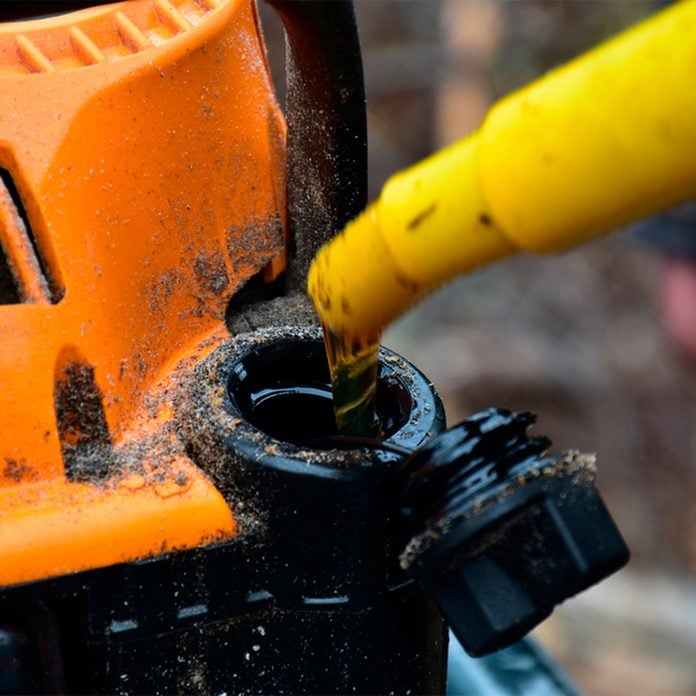
Don’t Run Out of Oil or Gas
Fill the gas and chain oil reservoirs before dropping a tree. The last thing you want is to run out of gas in the middle of a felling cut.
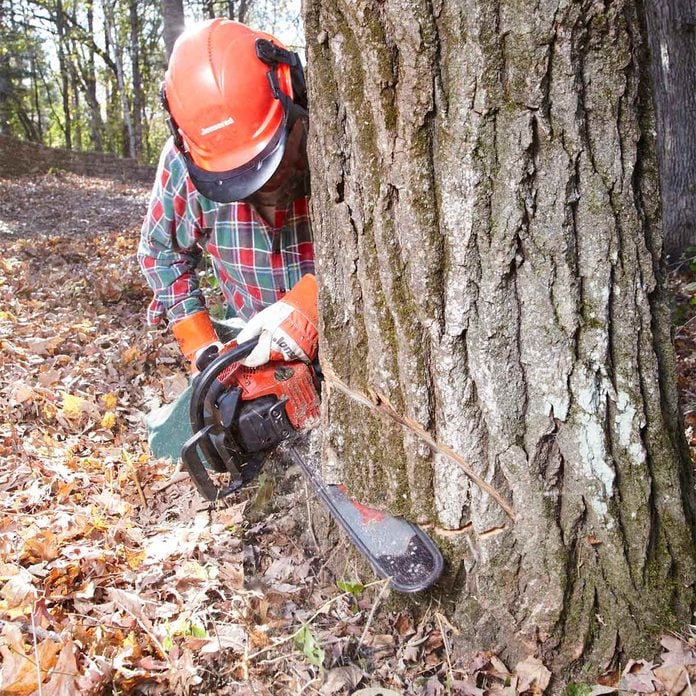
Don’t Lose Your Grip
Never take either hand off of a running saw. If the saw kicks back, there’s nothing to stop it. Use an encircling grip with your thumbs wrapped around the handles.

Don’t Attempt Cutting Down a Rotten Tree
Leave rotten trees to the pros. If the heart of the tree is rotted out, the felling direction can be extremely unpredictable. In addition, it most likely has many dead limbs above that just might shake loose and land on you during cutting.
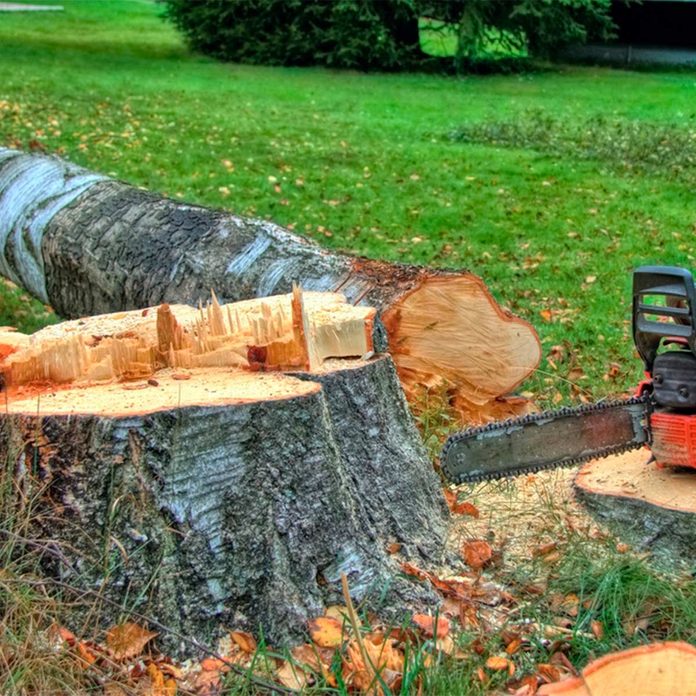
Don’t Use a Dull Chain Saw
We’ll show you how to sharpen a chain saw, making the job of cutting down a tree much easier.

Don’t Forget to Recheck Chain Tension
Before starting, check the chain tension. Recheck it after every hour or so of use, and adjust it if necessary. New chains stretch and need to be checked after 20 minutes of use. Loose chains can fly off the bar, causing serious injury. A loose chain also damages the drivers BAR on the chain and prevents them from fitting back into the bar groove.

Don’t DIY Around Power Lines or Near Structures
If there’s even a small risk that you won’t be able to fell a tree away from power lines or structures around your house, it’s not worth it to DIY. Hire a pro.

Don’t Cut in the Kickback Zone
This spot, called the kickback zone, is the top half of the bar’s tip. If the kickback zone comes in contact with something while the chain is moving, the saw will kick up and back toward you. That’s why modern chain saws are equipped with a chain brake designed to stop the chain if a kickback occurs.

Don’t Pinch the Saw
When cutting up your felled tree into smaller pieces, the saw can become pinched if you cut too far through a branch that supports the trunk. If this happens, stop the engine and use a stout branch as a lever to lift the trunk and free the saw.

Don’t Cut the Ground
When cutting up a felled tree, avoid touching the ground with the chain because even a brief encounter will severely dull the cutting teeth on your chain saw. If possible, cut partially through the tree and then rotate it to cut the rest of the way through.

Don’t Leave the Stump
You can remove a stump by renting a power stump grinder, but another way is to buy a can of tree stump removal.Most tree stump killer brands are made of powdered potassium nitrate, which speeds up the rotting process. You simply pour the granules into drilled holes and fill the holes with water. The stump will become pretty spongy after four to six weeks. Keep kids and pets away. Then you can break out the rotten wood with an ax.
